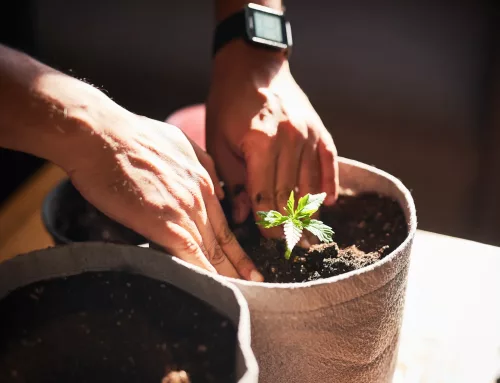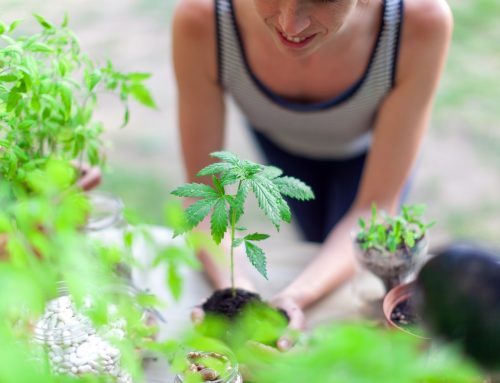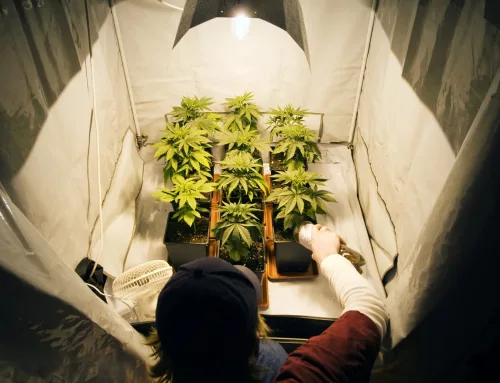Growing cannabis at home can be a rewarding and educational experience, but the learning process doesn’t have to stop once you figure out how to keep a plant alive.
After a cycle or two, you may find yourself eager to explore more advanced techniques that improve upon and enhance your current cannabis cultivation efforts.
As a home grower who has gone through this process myself, I recommend exploring any of the following advanced cannabis growing techniques to help you improve efficiency, broaden your skill set, and achieve new goals in your home grow.
#1 Always Be Experimenting
As a home grower, you’re not only in charge of production, but you’re also your own “Cannabis Cultivation Research and Development” department. What you learn becomes a tool in your toolbox for future projects.
If you’re ever comfortable, or even bored, it’s time for a new experiment. Experimentation is a key aspect of advanced cannabis cultivation.
You don’t have to reinvent the entire process to experiment. Even changing a single variable can teach you a plethora of lessons to help optimize your efforts so you get better results.
A few ideas to get you started:
- Nutrients: Try different nutrient blends, schedules, or combinations to see what works best for your plants and your growing situation. I run three different nutrient programs in my grow depending on my needs and current experiments.
- Grow Styles & Layouts: Try different grow styles such as amended soils, raised beds, outdoor (or indoor), Sea of Green (SOG) or Screen of Green (ScrOG).
- Pot Sizes: Experiment with various pot sizes to determine the optimal container for your plants. This is especially important if you want to hunt through more seeds. More seeds means more plants, which means smaller pots. Getting comfortable growing in various situations increases your flexibility and versatility as a grower.
- Pheno Hunt: Try your hand at growing multiple plants of the same variety and comparing them to one another. You’ll be amazed at how distinctly different two plants from the same genetic background can be.
#2 Try Cloning
Cloning is an essential technique for any advanced cannabis grower. It allows you to preserve the genetics of your favorite plants and maintain consistency in your garden.
If you’re like me, you’re popping seed packs regularly. Most of those seeds won’t grow up to be winners, and some of them may not even make it to flower. But when you do find a winner, you want to keep her around.
I dedicate one 4×4 tent to hunting through seeds in smaller pots. Then, clone my “winners” to run in my 4×4 keeper tent, where they’re grown together in a raised bed.
Learning to clone is a viable skill that gives you increased control over your grow and growing schedule, as well as reinforces the importance of sterility and IPM.
Start by learning how to take healthy cuttings from your plants and root them, as well as optimal environmental conditions to encourage successful root development.
Then, once you’ve got clones, begin implementing cloning into your grow schedule. This will ensure a continuous supply of plants at the right time (because, otherwise, you’ll have way too many plants, at the wrong time, which is a waste in so many ways).
#3 Set Up Multiple Grow Spaces
If you’re an indoor hobby grower like me, the first upgrade I made was a second grow tent. Expanding your grow to include multiple rooms, tents, or spaces can give you more room to experiment, as well as a consistent supply of buds.
Multiple grow spaces allow you to have simultaneous veg and flower “cycles,” which cuts your time between harvests in half.
My recommendation, if space and budget allow, is to run separate veg and flower spaces.
My current setup uses two 4×4 flower tents and an open veg area.
Since cannabis plants in a vegetative state are not sensitive to light in the way that flowering photoperiod plants are, you can veg without a contained space, and save your tents or rooms for flowering your ladies. This gives them the most protection during their most valuable production stage, as well as offers the ability to further shrink your gap between harvests by having a perpetual veg area and two alternating flower tents.
#4 Use Advanced Lighting Techniques
The first piece of equipment to upgrade in any grow is the light.
Most growers do not start out with quality lighting because it is expensive and unnecessary when you are a beginner who is still learning the ropes.
As your skills improve, the quality of light that you offer to your plants—both in intensity and spectrum—should be a primary consideration.
It’s not just as simple as swapping one light for another. You have an infinite amount of combinations and cycles to play with to optimize your efforts, including:
- Advanced Multi-Light Patterns: Experiment with running multiple lights in a room, and turning them on and off at different times to mimic cloud patterns. You can also run intermittent darkness schedules during veg to give your plants time to rest throughout the day.
- C-C-C-COMBO: What’s true in many aspects of the grow is true for lights too: plants love diversity. If you have the option, consider running both HID and LED, as many growers have found a combination to outperform either method independently.
- Supplements: In addition to the main spectrum of light that most lighting delivers, many lights can even be purchased with additional UV or far-red (FR) diodes to enhance specific aspects of plant growth. If your light doesn’t offer this as a built-in option, there are many small fixtures that you can use to add to your main light source.
Understanding different lighting techniques can help you target different needs. Another great tool to have in the toolbox.
#5 Explore Different Types of Cannabis Seeds
If you’ve only grown one type of seed, try something new.
While many beginners start with feminized autoflower seeds, exploring other types such as photoperiod seeds can offer new opportunities.
Autoflowers are a great starting point because they do a lot of the heavy lifting for you.
Say you’re growing Pineapple Diesel Autos. You don’t have to change the lighting cycle, they start and finish when they want, and, with the right setup, can be run on autopilot in most respects.
But that also leaves room to learn.
Photoperiod plants require an understanding of lighting schedules (and when to change them). If you end up growing any regular (male/female) photoperiod seeds, you’ll also learn how to sex plants. This can be done both visually and with the help of labs offering DNA detection.
I’ve been growing a bunch of photoperiod seeds recently, both feminized and regular, and it’s taught me countless lessons about germination, planting, and cloning.
#6 Learn Integrated Pest Management (IPM)
Integrated Pest Management is crucial for maintaining a healthy grow environment and preventing infestations.
In the beginning, most growers just try to keep their plants alive, and deal with problems as they pop up. This is natural, but, as they say, “an ounce of prevention is worth a pound of cure.”
Start with implementing regular scouting and plantwork times. This will keep you on top of any changes in your garden and allow you to treat issues at the earliest stage.
Take steps to prevent pests and pathogens, and have a plan of attack should trouble occur.
Brushing up on your IPM skills will keep your crops clean and prevent potential issues before they become problems.
#7 Consider Automation
Growing is a labor of love.
Without question, caring for a plant by hand provides a certain amount of benefit for both the grower and the plant that goes beyond the act itself.
But there comes a time when you run out of time, or you want to scale your efforts and need a way to be more efficient. Or maybe you just want to travel here and there and not worry about the grow for a few days or a week.
That’s where automation comes in.
Automating certain aspects of your grow can save time and improve efficiency, freeing you up to tackle bigger grows and enjoy your life outside of the garden.
There are 2 primary areas of the grow that you can automate: watering and environment.
Watering, or irrigation, can be automated using gravity-fed systems, like the Blumat, or by assembling a pre-built or DIY pump-fed system to deliver feeds throughout the grow.
For environmental control, consider one of many grow controllers on the market that allow you to connect sensors to equipment. These allow you to do advanced programming, like trigger your air conditioning if the grow gets too hot, or trigger your dehumidifier if there’s a cold snap and your climate changes overnight.
The one caution I offer to growers considering automation is that automating your tasks is meant to free up time for other, necessary grow duties.
Just because it’s automated, doesn’t mean you can flip a switch and come back in 4 months without checking on your plants.
Use that extra time to take better care of your grow.
#8 Make Your Own Extracts
As much as growing teaches you more about growing, so too can exploring post-harvest processes like extraction that depend on the quality of your grow.
Learning about extraction teaches you not only a valuable and sought-after skill in cannabis, but also gives you a deeper appreciation for the nuances of specific types of cannabis cultivation for specific goals.
When you make extracts, you’re focused on the resin glands, not the overall flower. This leads to changes in growing style and harvesting methods, as well as aids in pheno hunt selections.
Never stop learning. Never stop trying new things.
The best growers know that there is always room for improvement.
Every experiment teaches you more about your plants and helps you become a more skilled and successful grower.
Ready to try something new in your grow? Starting your experiments off with genetics you can count on, like those from Happy Valley Genetics, makes all the difference when comparing your results.
TRY HAPPY VALLEY GENETICS
ON YOUR NEXT EXPERIMENT!
Choose from a variety of new Feminized Autoflower or Photoperiod Seeds Today!




